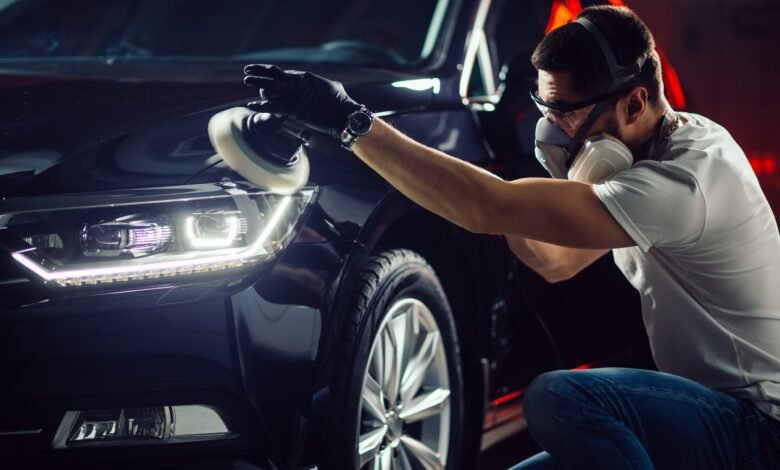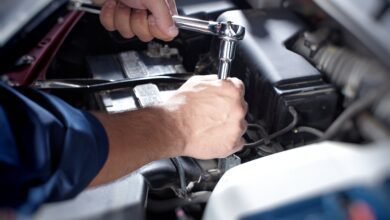The Ultimate Guide to Car Detailing: Tips and Techniques

Maintaining your car’s pristine look requires more than a casual wash now and then. Car Detailing in Brunswick a meticulous process of cleaning, restoring, and finishing both the interior and exterior, can rejuvenate your vehicle to near-showroom condition.
Whether you’re a car enthusiast or just want to keep your vehicle in top shape, this guide will walk you through essential tips and techniques for effective car detailing.
Understanding the Basics of Car Detailing
Car detailing goes beyond a simple wash and wax. It involves a thorough cleaning and reconditioning of the entire vehicle using specialised tools and products. Detailing is generally divided into two main categories: exterior and interior detailing.
Exterior Detailing: This includes cleaning and restoring the outer surface of the car. The process involves washing, polishing, and waxing to remove dirt, scratches, and oxidation, thereby enhancing the car’s overall appearance and protecting the paintwork.
Interior Detailing: This focuses on the inside of the vehicle, including the dashboard, seats, carpets, and other surfaces. Interior detailing involves vacuuming, steam cleaning, and using brushes and specialised cleaning agents to remove stains, odours, and grime.
Understanding these categories is crucial, as each requires specific products and techniques to achieve the best results.


Essential Tools and Products for Car Detailing
Before diving into the detailing process, it’s essential to have the right tools and products.
A comprehensive car detailing kit includes items like microfiber towels, wash mitts, buckets, and a hose with a nozzle. Additionally, you will need car-specific shampoos, waxes, polishes, and interior cleaners.
Microfiber Towels: These are essential for both washing and drying your car. Microfiber towels are highly absorbent and gentle on your car’s surface, reducing the risk of scratches.
Car Shampoo and Soap: Unlike household detergents, car shampoos are designed to remove dirt and grime without stripping the wax or damaging the paint.
Clay Bars: Clay bars are used to remove embedded contaminants from the car’s paint, ensuring a smooth and clean surface before polishing.
Polish and Wax: Polish helps remove minor scratches and swirls, while wax provides a protective layer, enhancing the car’s shine and safeguarding the paint from environmental damage.
Vacuum Cleaner and Brushes: For interior detailing, a vacuum cleaner with various attachments helps reach every nook and cranny. Brushes of different sizes are used to clean air vents, seams, and tight spaces.
Step-by-Step Guide to Exterior Detailing
- Initial Rinse: Start with a thorough rinse to remove loose dirt and debris from the car’s surface. This prevents scratching during the washing process.
- Washing: Use the two-bucket method—one for soapy water and the other for rinsing your wash mitt. This reduces the chance of reintroducing dirt to the car’s surface. Work from the top down, washing and rinsing one section at a time.
- Clay Bar Treatment: After washing, use a clay bar to remove any remaining contaminants. Lubricate the surface with a clay bar lubricant or car detailing Brunswick spray, and gently rub the clay bar over the paint.
- Polishing: Apply a car polish using a dual-action polisher or by hand. Polishing removes minor imperfections and enhances the paint’s clarity and gloss.
- Waxing: Finish with high-quality car wax to seal in the shine and protect the paint. Apply wax in thin, even layers, and buff off with a clean microfiber towel.
Comprehensive Interior Detailing Techniques
- Vacuuming: Start by removing all floor mats and vacuuming the entire interior. Use attachments to reach under seats, between crevices, and other hard-to-reach areas.
- Cleaning Upholstery and Carpets: Use an appropriate cleaner for your car’s upholstery—fabric, leather, or vinyl. For fabric seats and carpets, a steam cleaner or carpet extractor can effectively remove stains and odours.
- Dashboard and Trim: Clean the dashboard, centre console, and other plastic or vinyl surfaces with a dedicated cleaner. Avoid using products that leave a greasy residue. Finish with a UV protectant to prevent fading and cracking.
- Windows and Mirrors: Use a streak-free glass cleaner to clean the inside of windows and mirrors. Microfiber towels are ideal for this task as they don’t leave lint or streaks.
- Final Touches: Pay attention to small details like air vents, door jambs, and the steering wheel. Use brushes and cotton swabs to clean these intricate areas thoroughly.
Maintaining the Results of Your Car Detailing
Regular maintenance is key to preserving the results of your detailing efforts. Wash your car regularly using the two-bucket method to prevent dirt buildup.
Apply a quick detailer spray between washes to maintain the shine. For the interior, keep a handheld vacuum handy to address spills and crumbs immediately.
Additionally, parking your car in a shaded or covered area can protect it from environmental elements like UV rays, bird droppings, and tree sap. Using a car cover can also provide an extra layer of protection, especially if you don’t have access to covered parking.
Conclusion
Car detailing Brunswick is an art and science that, when done correctly, can significantly enhance your vehicle’s appearance and longevity. With the right tools, products, and techniques, you can achieve professional-level results at home. So, roll up your sleeves and give your car the meticulous care it deserves.



